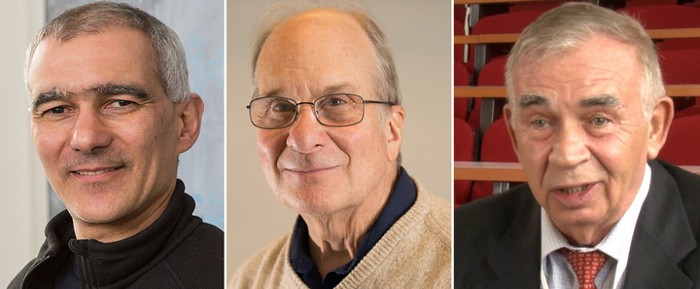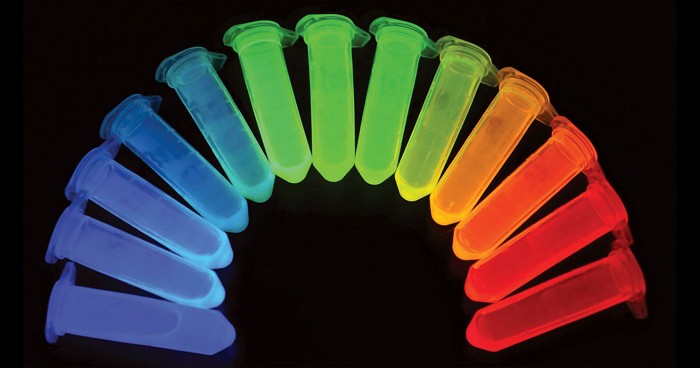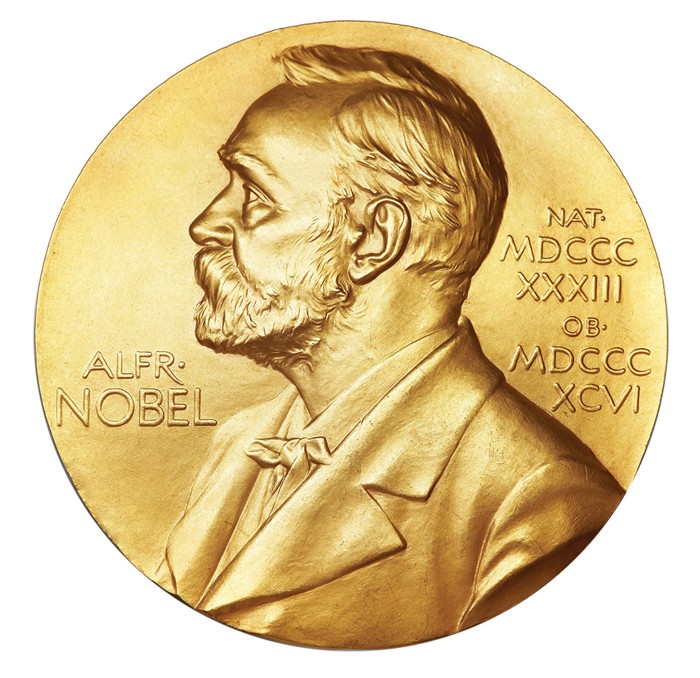Advertisement
Grab your lab coat. Let's get started
Welcome!
Welcome!
Create an account below to get 6 C&EN articles per month, receive newsletters and more - all free.
It seems this is your first time logging in online. Please enter the following information to continue.
As an ACS member you automatically get access to this site. All we need is few more details to create your reading experience.
Not you? Sign in with a different account.
Not you? Sign in with a different account.
ERROR 1
ERROR 1
ERROR 2
ERROR 2
ERROR 2
ERROR 2
ERROR 2
Password and Confirm password must match.
If you have an ACS member number, please enter it here so we can link this account to your membership. (optional)
ERROR 2
ACS values your privacy. By submitting your information, you are gaining access to C&EN and subscribing to our weekly newsletter. We use the information you provide to make your reading experience better, and we will never sell your data to third party members.
Nobel Prize
Three quantum dot researchers awarded Nobel Prize in Chemistry
Moungi Bawendi, Louis Brus and Alexei Ekimov share prize for research that added color to nanotechnology
by Mitch Jacoby reporting by Brianna Barbu and Laura Howes
October 4, 2023

The 2023 Nobel Prize in Chemistry has been awarded to three researchers “for the discovery and synthesis of quantum dots.” Moungi Bawendi of the Massachusetts Institute of Technology, Louis Brus of Columbia University, and Alexei Ekimov, formerly chief scientist at Nanocrystals Technology, will each receive one-third of the prize money—11 million Swedish kronor (about $1 million).
Quantum dots are semiconductor crystals in the nanometer size range—so small that about 500,000 nm fit across the period at the end of this sentence. Because of the effects of quantum mechanics, these particles exhibit a number of physical properties that uniquely depend on the size of the crystal. For example, how these particles absorb and emit light varies widely between particles that differ just slightly in size. Researchers, including this year’s chemistry laureates, have exploited those size-dependent traits to make quantum dots that glow in every color in the rainbow.

In the 1980s, Ekimov showed that optical properties of various types of colored glass were a result of copper chloride nanoparticles embedded in the glass. That work established experimentally size dependence in quantum effects. A few years later, Brus proved that those effects could be observed in solutions with free-floating particles. And in the 1990s, Bawendi devised chemical methods for synthesizing uniform quantum dots in a range of crystal sizes.
Unlike some fundamental discoveries, the size-dependent characteristics of quantum dots has ushered in a host of commercial applications. One popular example is ultrasharp television screens. These devices prominently display “quantum dots” on the packaging, moving the scientific term from technical parlance to everyday language.
In addition to high-end electronic displays, quantum dots have made their way into photovoltaic cells and other energy conversion devices, diodes, lasers, and other specialized light emitters. Quantum dots are also used in biotechnology and medical diagnostics for labeling and tracking cells and in other bioimaging applications.
At the Nobel Prize press conference today in Stockholm, Johan Åqvist, chair of the Nobel Committee for Chemistry, noted that quantum dots’ size-dependent properties extend beyond their colorful nature. The particles’ electronic, magnetic, and catalytic properties, and their melting points, all depend critically on their size, he said. Quantum dots offer a way of tailoring materials properties not by changing the material but rather simply by changing the size, Åqvist said. “It’s a foundational discovery in nanotechnology.”
“Just making quantum dots is easy,” Lea Nienhaus of Florida State University writes in an email. “Making perfect quantum dots is a skill few have mastered.”
These materials have made an immense impact on inorganic and materials chemistry thanks to groundbreaking synthesis methods pioneered by Bawendi and others for finely controlling the particles’ sizes, North Carolina State University’s Milad Abolhasani tells C&EN in an email. “These methods enable us to create uniform and customizable nanoparticles for a wide range of applications,” Abolhasani adds. “We’re just scratching the surface of what quantum dots can do. The possibilities are endless.”
This research has impacted “the way we do medical imaging, sensors, solid-state devices, and now is poised to revolutionize … AI and theranostics in medicine,” says Rigoberto Advincula of the Oak Ridge National Laboratory, in an email.
“This prize in chemistry absolutely illustrates how something that was [just] theory in the 1930s has now been made manifest,” says Judith Giordan, president of the American Chemical Society (ACS publishes C&EN). Giordan adds “it takes time sometimes for things to come to fruition, because it builds step by step one thing on the next. We don’t always see that in chemistry.”
“I would be at a loss to tell you in 10 years where this is gonna go, because I'm waiting for that surprise myself,” Bawendi said in a press conference at MIT.
The run-up to the prize announcement was complicated because the names of the winners were leaked to a Swedish newspaper in advance of the Nobel committee’s final meeting before announcing the winners. “It is a mistake by the Royal Swedish Academy of Sciences. Åqvist, told Reuters prior to the official announcement. ”There was a press release sent out for still unknown reasons,” said Hans Ellegren, secretary general of the RSAS, at a press conference this morning. “We have been very active this morning trying to find out what actually happened but at this place, we don't know that. We deeply regret that this happened.”
UPDATE:
This story was updated Oct. 4 to provide quotes from Johan Åqvist, Lea Nienhaus, Milad Abolhasani, Judith Giordan, Hans Ellegren and Moungi Bawendi as well as more detail about the laureates’ prize-winning work.




Join the conversation
Contact the reporter
Submit a Letter to the Editor for publication
Engage with us on Twitter